Lifestyle
How to get a first hearing aid that you’ll like and can afford
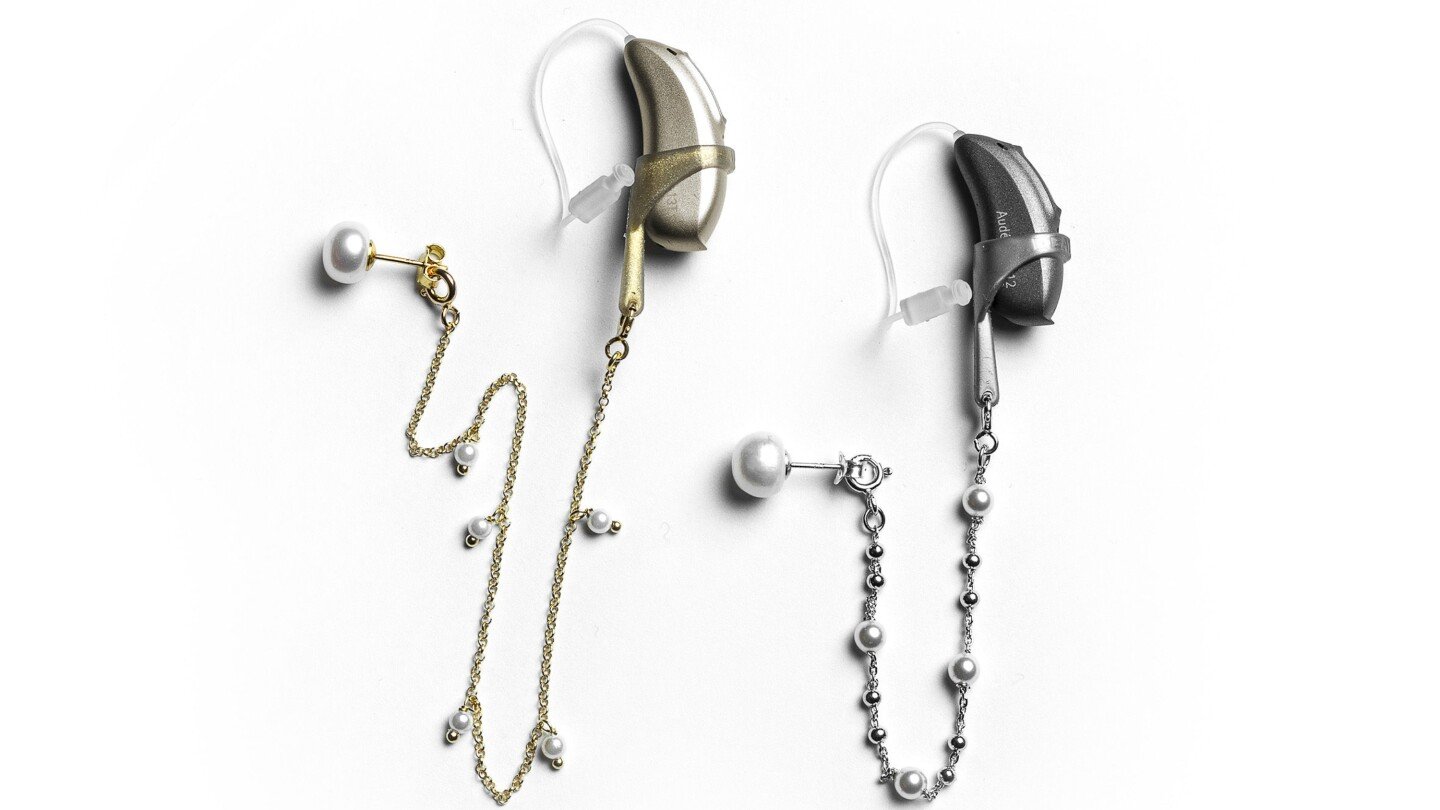
NEW YORK (AP) — My first tip-off were the little things, the high-pitched little things: the doorbell and ringtones my kids could hear but I could not.
Then it was the garbled-sounding conversations, and the accompanying annoyance of having to ask people to repeat themselves. Or worse, giving up and just playing along without being able to follow everything that was being said.
Even then, I stalled for years before finally going through the process of getting a hearing aid. How do you even begin? Will it look clunky and make me feel like a dinosaur? And the cost!
Getting a hearing test, and confirmation that I needed a hearing aid, was just the beginning.
Finding an expert
The doctor handed me a list of places I could go to get fitted. I made some calls and narrowed it down to the places that took my insurance and my zero-interest health care credit card.
The first couple places were demoralizing: I walked in, was told it’d be $7,000 for the “best” option (they mysteriously didn’t happen to have any other options handy), then marched right back out the door, utterly discouraged.
I started asking friends and neighbors whether they wore a hearing aid, or knew anyone at all with a hearing aid, and could point me to a good audiologist.
It took a lot of poking around, but I found one — and it made all the difference.
This article is part of AP’s Be Well coverage, focusing on wellness, fitness, diet and mental health. Read more Be Well.
The joy of reconnecting with the world
I’ve been wearing my hearing aids for several months now, and they are as easy as slipping on a pair of glasses, are almost invisible, have reconnected me with the world, and, as crazy as this may sound, they bring me joy.
After talking with a few audiologists around the country, it turns out that my experience is pretty typical.
“There are a lot of people who stall before getting one,” says Meagan P. Bachmann, director of audiology at Atrium Health Wake Forest Baptist, in North Carolina.
“Hearing is important because it connects us with people,” she says. “Multiple studies show that not hearing can affect your ability to connect with others and participate in life, so you have to think of it in terms of overall health. Maybe you no longer go to family events, or you don’t understand your doctor. People start to withdraw. A lot of people come in because it’s gotten so bad that it is impacting their relationships.”
Steps to take
To speed up the process and make it less frustrating, here’s what the pros recommend:
1. Get tested, take the results seriously, and know that many if not most hearing aids these days are small, nearly invisible, rechargeable, and pretty easy to wear and maintain. And believe it or not, hearing aids can be fun — these days, there are colors to choose from and ways to bejewel them. One company, Deafmetal, makes jazzy-looking “safety rings” to help keep hearing aids in place.
2. Shop for an expert audiologist. Look for someone who takes your insurance or any sort of medical credit card you might have, or has a payment plan of some kind, if needed. This is a world at the awkward juncture of consumerism and medical care, but a good audiologist should come across as a medical provider, not a salesperson. And a good audiologist should take the time to work with you to find a hearing aid that meets your individual needs, and also fits your budget.
A good place to start is often with your doctor; with the American Academy of Audiologists, which lists providers on its website; or by word of mouth.
“Although all hearing aids are amplifiers, not everybody needs the same thing,” says Bachmann. “Fitting a hearing aid is an art. It changes the acoustics, and everyone is different. You want someone who listens to your lifestyle needs. Do you have a lot of difficulty with noise? Are you mostly in quiet situations? How much technology do you need, and what kind?”
Greta Stamper, an audiologist at the Mayo Clinic in Jacksonville, Florida, agrees. “Hearing loss is not a one-time thing. It’s a chronic health condition. It should be a partnership between you and your audiologist,” she said. “It’s someone asking you what you’re looking for and how it’s going. You shouldn’t feel pressured or pushed.”
3. A note on cost. Although hearing aids can be pricey, there are affordable options, and a good audiologist should be able to let you try out options at several price points. Insurance often covers much of the cost, and there are ways to pay for the remaining cost in installments. Also, avoidance has pretty high costs as well, audiologists say, and the longer the wait, the harder it may be to solve the problem with a hearing aid. Although there are cheaper hearing aids at big box stores, Bachmann warns that it’s good to check with your audiologist before taking that route. “Some of those hearing aids are locked, so that you’re not allowed to have them programmed by an outside audiologist,” she says.
Remember, says Stamper, that hearing aids are an investment, and usually last between five and six years.
4. Know your rights. “We select what is the most likely to be successful, and if it doesn’t work out you come back and do something else,” says Stamper. She said most states mandate a trial period. In some cases, hearing-aid companies also cover the cost of multiple visits to your audiologist while you are getting used to your new hearing aid and get training in how to use and maintain it.
5. Embrace the process, and expect it to take a little time and a few expert tweaks. Audiologists say your brain needs time to adjust to a hearing aid, and that hearing-aid settings should be adjusted little by little as your brain adapts to them.
“A big misconception is that you can just wear them a couple hours a day. Your brain does better with it if you use them most of the day. Your brain needs to adapt to hearing sounds it hasn’t heard for a while, and it takes the brain awhile to relearn how to process all those sounds,” says Stamper.
6. Be realistic. “Although hearing aids can be enormously beneficial, they may not give you back your normal hearing,” says Stamper. Depending on the situation, there might be limitations to what a hearing aid can do.
“It might just be lots of improvement in the key areas in which you’re struggling,” said Stamper.
Using hearing aids is a process, the audiologists say, and although it requires some patience, it can be well worth the journey.
___
For more AP Lifestyles stories, go to https://apnews.com/lifestyle.
Lifestyle
Love Island sparks debate about race and dating among Black women
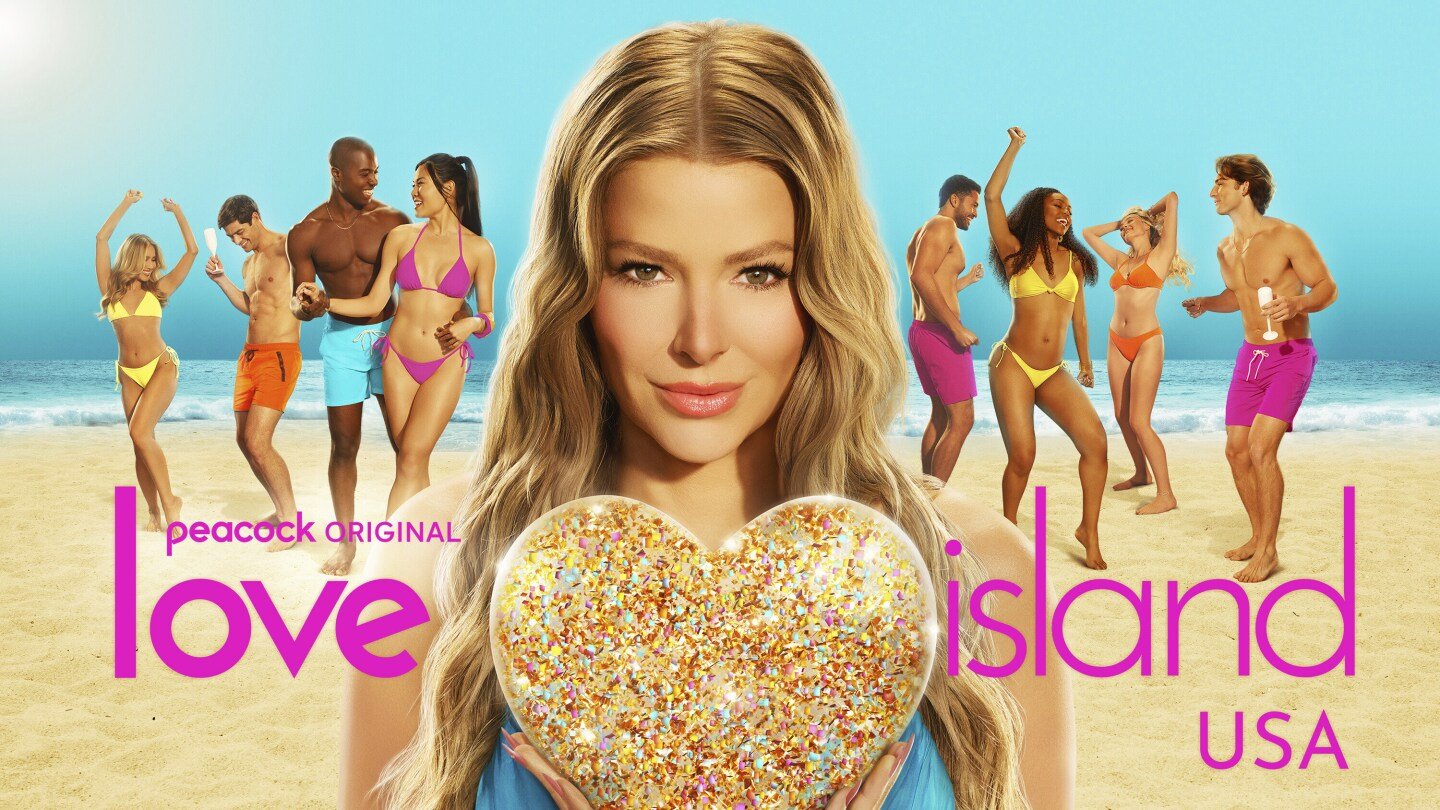
It used to be that dating was as simple as deciding between dinner, a trip to the movies or an arcade. Now, understanding the dating scene has become intermingled with smartphones, matchmaking apps and one’s ability to navigate thorny social issues like racial preference in a mate.
“Love Island,” a widely popular international reality television franchise, is emblematic of the complexities of modern dating. It has also sparked heated discussions among fans about the desirability of Black women and darker-complexioned people both on and off air.
The show, which aired the finale of the seventh season of its U.S. version Sunday and is airing the 12th season of its U.K. version, casts conventionally attractive “islanders” who are generally in their early to late 20s for a six- to eight-week stay in a luxury villa. Men and women compete for long-lasting relationships and a cash prize.
But as the show’s daters face challenges meant to test their bonds, as well as elimination by villa mates or by fans’ vote, notions of who is and isn’t desirable frequently come up for viewers and contestants alike. In the end, many fans are left with the perception that racial bias, colorism and misogyny are especially inescapable for Black women on reality dating shows.
“The diversity in the U.K. one is terrible,” said Oghosa Ovienrioba, a content creator from London. “It’s very anti-Black.”
It’s not simply that Black women are picked last for coupling or eliminated first on the U.K. or U.S. versions of the show. Many fans say there’s a recurring theme of suitors dumping or ditching Black female contestants when there is a fairer skinned option. Black female contestants have also complained of not doing well on the show when they don’t lower their standards for intimacy with a suitor, as though they are lucky to even been considered dating material among more desirable mates.
Even with these viewer frustrations, Ovienrioba said she prefers “ Love Island USA.”
“I feel like the dark skin Black women on that show always find men who fit their vibe, who respect them, who are attracted to them, desire them, treat them like queens,” she said.
‘Love Island’ U.K. irks fans over treatment of Black women
In the U.K. version, fans have counted multiple instances where Black female contestants were left as the last choice when couples were picked, or they were first to get eliminated and dumped from the villa. Many have also noted that it took eleven seasons before a darker-complexioned Black woman was declared the winner.
Now in its 12th season, Love Island U.K. is still dogged by allegations of male contestants’ bias against Black women. After 23-year-old Alima Gagigo, a Black woman, chose to couple up with 26-year-old Blu Chegini, a white man, he said, “I’ll be honest, on paper, you’re not my type.”
Gagigo responded, “Of course,” as if those were words she was not surprised to hear.
There is no evidence that Chegini was referring to Gagigo’s race or ethnicity. But the exchange was enough to confirm what some in audience felt was an implicit bias against Black women in the villa.
“Love Island’s only stipulation is that applicants are over 18, single and looking for love. Our application and casting process is inclusive to all and we are always aiming to reflect the age and diversity of our audience on the show,” a show spokesperson for “Love Island U.K.” said.
Black American contestants, too, say their complexion impacts their treatment
JaNa Craig, a contestant on “Love Island USA’s” beloved sixth season, which aired last summer, landed a spot in the final four couples by the end of the competition alongside Kenny Rodriguez, who entered the villa 13 days into the season. Her bubbly personality made her a fan favorite.
Although she initially worried about how viewers felt about her, the positive audience reaction culminated in her being deemed the “baddest girl in Love Island history,” which means hot or beautiful in slang terms. Still, she felt some male contestants may not have been interested in her and Serena Page, another Black female contestant, because of their skin complexion. Page went on to win that season of “Love Island USA.”
“The very first time I felt special is when the very first guy picked me because he had three options. Other than that, I always felt like I was getting the short end of the stick,” Craig said. “Even though we know our worth and we know we’re beautiful, we still felt like — not good enough.”
Ultimately, Craig felt proudest when she heard from other Black women who said they appreciated her representation on the show, given the perception that Black women are less desirable on dating shows.
“I felt honored by the amount of Black girls that were like, ‘JaNa, you inspire me,’” she said.
“Love Island USA” producer Peacock, which on Sunday debuted a spinoff to its popular Season 6 season, titled “Love Island: Beyond the Villa,” declined comment for this story.
Desirability concerns reflect real-world anti-Black sentiments
Fans’ and contestants’ concerns about Black women’s representation on the show reflect a real-world anti-Black and misogynistic views of Black women, commonly referred to as misogynoir. Scholars describe it as both implicit and explicit contempt for Black women, much of it rooted in racist stereotypes that are perpetuated in popular culture and mass media. While Love Island contestants are not being outright racist to Black female competitors, many viewers feel the interactions Black women have had on the show have been laced with implicit bias.
Few viewers see anything wrong with “Love Island” contestants being open about the specific traits they look for in potential suitors. Tall over short, fit over average build, tattooed over unmarked.
But contestants’ racial preferences, whether real or simply perceived by fans of the show, can’t be seen as objective truth about who is or is not desirable in the world, said Alexandria Beightol, host of the podcast “Apathy Is Not An Option” at the Southern Poverty Law Center, a civil rights and legal advocacy nonprofit.
“You recognizing you have a type should also be you recognizing you are a product of a lot of mass media,” Beightol said.
The show’s producers should see the show’s popularity as an opportunity to dispel and not reinforce notions of beauty, especially ones harmful to Black women and darker-complexioned people, she added.
“It would behoove you to have some producers that look like some of the women on there who can kind of anticipate some of that drama,” Beightol said. “They do frame those women as beautiful. In the history of reality programming, they’ve busted through a lot of the implicit views that the media used to hold itself to.”
Lifestyle
Hungary’s oldest library is fighting to save 100,000 books from a beetle infestation
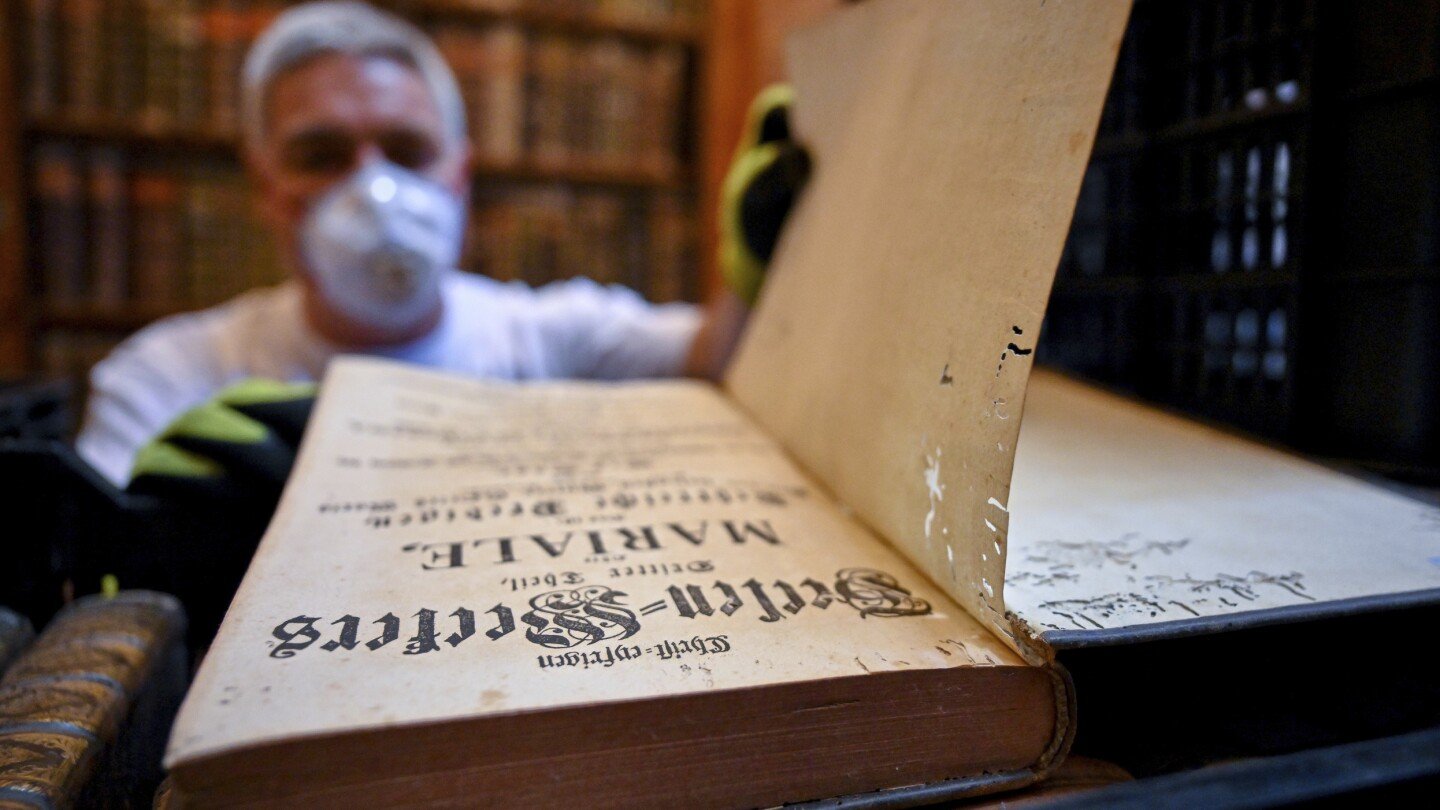
PANNONHALMA, Hungary (AP) — Tens of thousands of centuries-old books are being pulled from the shelves of a medieval abbey in Hungary in an effort to save them from a beetle infestation that could wipe out centuries of history.
The 1,000-year-old Pannonhalma Archabbey is a sprawling Benedictine monastery that is one of Hungary’s oldest centers of learning and a UNESCO World Heritage site.
Restoration workers are removing about 100,000 handbound books from their shelves and carefully placing them in crates, the start of a disinfection process that aims to kill the tiny beetles burrowed into them.
The drugstore beetle, also known as the bread beetle, is often found among dried foodstuffs like grains, flour and spices. But they also are attracted to the gelatin and starch-based adhesives found in books.
They have been found in a section of the library housing around a quarter of the abbey’s 400,000 volumes.
“This is an advanced insect infestation which has been detected in several parts of the library, so the entire collection is classified as infected and must be treated all at the same time,” said Zsófia Edit Hajdu, the chief restorer on the project. “We’ve never encountered such a degree of infection before.”
Abbey houses historical treasures
The beetle invasion was first detected during a routine library cleaning. Employees noticed unusual layers of dust on the shelves and then saw that holes had been burrowed into some of the book spines. Upon opening the volumes, burrow holes could be seen in the paper where the beetles chewed through.
The abbey at Pannonhalma was founded in 996, four years before the establishment of the Hungarian Kingdom. Sitting upon a tall hill in northwestern Hungary, the abbey houses the country’s oldest collection of books, as well as many of its earliest and most important written records.
For over 1,000 years, the abbey has been among the most prominent religious and cultural sites in Hungary and all of Central Europe, surviving centuries of wars and foreign incursions such as the Ottoman invasion and occupation of Hungary in the 16th century.
Ilona Ásványi, director of the Pannonhalma Archabbey library, said she is “humbled” by the historical and cultural treasures the collection holds whenever she enters.
“It is dizzying to think that there was a library here a thousand years ago, and that we are the keepers of the first book catalogue in Hungary,” she said.
Among the library’s most outstanding works are 19 codices, including a complete Bible from the 13th century. It also houses several hundred manuscripts predating the invention of the printing press in the mid-15th century and tens of thousands of books from the 16th century.
While the oldest and rarest prints and books are stored separately and have not been infected, Ásványi said any damage to the collection represents a blow to cultural, historical and religious heritage.
“When I see a book chewed up by a beetle or infected in any other way, I feel that no matter how many copies are published and how replaceable the book is, a piece of culture has been lost,” she said.
Books will spend weeks in an oxygen-free environment
To kill the beetles, the crates of books are being placed into tall, hermetically sealed plastic sacks from which all oxygen is removed. After six weeks in the pure nitrogen environment, the abbey hopes all the beetles will be destroyed.
Before being reshelved, each book will be individually inspected and vacuumed. Any book damaged by the pests will be set aside for later restoration work.
Climate change may have contributed
The abbey, which hopes to reopen the library at the beginning of next year, believes the effects of climate change played a role in spurring the beetle infestation as average temperatures rise rapidly in Hungary.
Hajdu, the chief restorer, said higher temperatures have allowed the beetles to undergo several more development cycles annually than they could in cooler weather.
“Higher temperatures are favorable for the life of insects,” she said. “So far we’ve mostly dealt with mold damage in both depositories and in open collections. But now I think more and more insect infestations will appear due to global warming.”
The library’s director said life in a Benedictine abbey is governed by a set of rules in use for nearly 15 centuries, a code that obliges them to do everything possible to save its vast collection.
“It says in the Rule of Saint Benedict that all the property of the monastery should be considered as of the same value as the sacred vessel of the altar,” Ásványi said. “I feel the responsibility of what this preservation and conservation really means.”
Lifestyle
Osprey are declining and environmentalists blame fishing industry’s take of menhaden
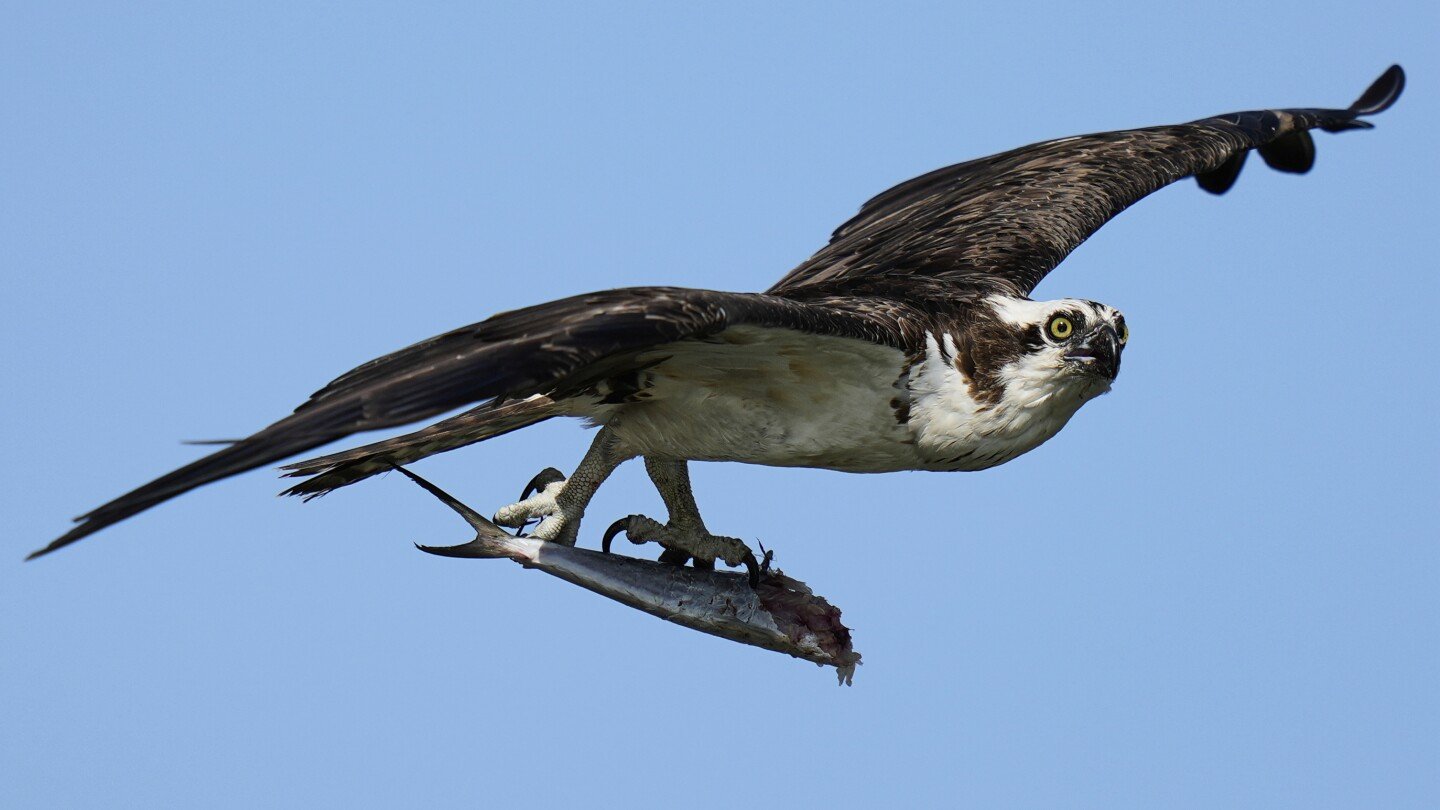
GLOUCESTER POINT, Va. (AP) — Stepping onto an old wooden duck blind in the middle of the York River, Bryan Watts looks down at a circle of sticks and pine cones on the weathered, guano-spattered platform. It’s a failed osprey nest, taken over by diving terns.
“The birds never laid here this year,” said Watts, near the mouth of Virginia’s Chesapeake Bay. “And that’s a pattern we’ve been seeing these last couple of years.”
An osprey is silhouetted as it perches atop a nest on the Lynnhaven River, June 30, 2025, in Virgina Beach, Va. (AP Photo/Stephanie Scarbrough)
Watts has a more intimate relationship with ospreys than most people have with a bird — he has climbed to their nests to free them from plastic bags, fed them by hand and monitored their eggs with telescopic mirrors.
The fish-eating raptor known for gymnastic dives and whistle-like chirps is an American conservation success story. After pesticides and other hazards nearly eliminated the species from much of the country, the hawk-like bird rebounded after the banning of DDT in 1972 and now numbers in the thousands in the U.S.
An osprey flies with a half-eaten fish in its talons above the Lynnhaven River, June 30, 2025, in Virginia Beach, Va. (AP Photo/Stephanie Scarbrough)
But Watts has documented an alarming trend. The birds, which breed in many parts of the U.S., are failing to successfully fledge enough chicks around their key population center of the Chesapeake Bay. The longtime biologist blames the decline of menhaden, a small schooling fish critical to the osprey diet. Without menhaden to eat, chicks are starving and dying in nests, Watts said.
Osprey are an environmental indicator
Watts’s claim has put him and environmental groups at odds with the fishing industry, trade unions and sometimes government regulators. Menhaden is valuable for fish oil, fish meal and agricultural food as well as bait.
U.S. fishermen have caught at least 1.1 billion pounds of menhaden every year since 1951. Members of the industry tout its sustainability and said the decline in osprey may have nothing to do with fishing.
But without help, the osprey population could tumble to levels not seen since the dark days of DDT, said Watts, director of the Center for Conservation Biology at The College of William & Mary in Williamsburg, Virginia.
Brian Watts, research professor and director of the Center for Conservation Biology at The College of William & Mary, looks over at failed osprey nest atop a wooden duck blind on the Lower York River, June 30, 2025, in Gloucester Point, Va. (AP Photo/Stephanie Scarbrough)
“The osprey are yelling pretty loudly that, hey, there’s not enough menhaden for us to reproduce successfully,” Watts said. “And we should be listening to them to be more informed fully on the fisheries side, and we should take precaution on the fisheries management side. But that hasn’t won the day at this point.”
Decline linked to menhaden in studies
Watts, who has studied osprey on the Chesapeake for decades, has backed his claims of population decline by publishing studies in scientific journals. He said it boils down to a simple statistic — to maintain population, osprey pairs need to average 1.15 chicks per year.
Osprey were reproducing at that level in the 1980s, but today in some areas around the main stem of the Chesapeake, it’s less than half of that, Watts said. In particularly distressed areas, they aren’t even reproducing at one-tenth that level, he said. And the decline in available menhaden matches the areas of nesting failure, Watts said.
A bald eagle, left, steals a fish from an osprey before it could feed above the Lynnhaven River, June 30, 2025, in Virginia Beach, Va. (AP Photo/Stephanie Scarbrough)
Also called pogies or bunkers, the oily menhaden are especially important for young birds because they are more nutritious than other fish in the sea. Osprey “reproductive performance is inextricably linked to the availability and abundance” of menhaden, Watts wrote in a 2023 study published in Frontiers in Marine Science.
Conservationists have been concerned for years, saying too many menhaden have been removed to maintain their crucial role in the ocean food chain. Historian H. Bruce Franklin went so far as to title his 2007 book on menhaden “The Most Important Fish In The Sea.”
Fishing industry pushes back
Menhaden help sustain one of the world’s largest fisheries, worth more than $200 million at the docks in 2023. Used as bait, the fish are critical for valuable commercial targets such as Maine lobster. They’re also beloved by sportfishermen.
The modern industry is dominated by Omega Protein, a Reedville, Virginia, company that is a subsidiary of Canadian aquaculture giant Cooke. The company pushed back at the idea that fishing is the cause of osprey decline, although it did acknowledge that fewer menhaden are showing up in some parts of the bay.
Federal data show osprey breeding is in decline in many parts of the country, including where menhaden is not harvested at all, said Ben Landry, an Omega spokesperson. Climate change, pollution and development could be playing a role, said Landry and others with the company.
Blaming fishing “just reeks of environmental special interest groups having an influence over the process,” Landry said.
New rules could be on the way
The menhaden fishery is managed by the Atlantic States Marine Fisheries Commission, an interstate body that crafts rules and sets fishing quotas. Prompted by questions about ospreys, it created a work group to address precautionary management of the species in the Chesapeake Bay.
A young osprey returns to its nest on the Lynnhaven River, June 30, 2025, in Virginia Beach, Va. (AP Photo/Stephanie Scarbrough)
In April, this group proposed several potential management approaches, including seasonal closures, restrictions on quotas or days at sea, and limitations on kinds of fishing gear. The process of creating new rules could begin this summer, said James Boyle, fishery management plan coordinator with the commission.
The osprey population has indeed shown declines in some areas since 2012, but it’s important to remember the bird’s population is much larger than it was before DDT was banned, Boyle said.
“There are big increases in osprey population since the DDT era,” Boyle said, citing federal data showing a six-fold increase in osprey populations along the Atlantic Coast since the 1960s.
Environmentalists says bird’s decline could worsen
To a number of environmental groups, any decline is too much. This irritates some labor leaders who worry about losing more jobs as the fishing industry declines.
Kenny Pinkard, retired vice president of UFCW Local 400’s executive board and a longtime Virginia fishermen, said he feels the industry is being scapegoated.
“There are some people who just don’t want to see us in business at all,” he said.
But Chris Moore, Virginia executive director for Chesapeake Bay Foundation, said the country risks losing an iconic bird if no action is taken. He said Watts’s studies show that the osprey will fail without access to menhaden.
“Osprey have been a success story,” Moore said. “We’re in a situation where they’re not replacing their numbers. We’ll actually be in a situation where we’re in a steep decline.”
___
Whittle reported from Portland, Maine.
___ This story was supported by funding from the Walton Family Foundation. The AP is solely responsible for all content.
-

 Asia5 days ago
Asia5 days agoGujarat state: Bridge collapse kills 9 in India
-

 Europe5 days ago
Europe5 days agoTrump promised 200 deals by now. He’s gotten 3, and 1 more is getting very close
-
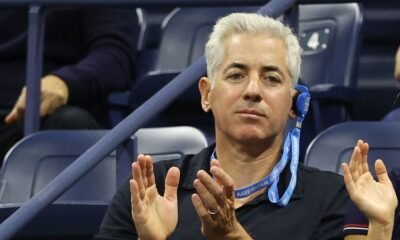
 Sports3 days ago
Sports3 days agoBill Ackman: Swift backlash after billionaire’s pro debut
-

 Europe3 days ago
Europe3 days agoGerman tourist found alive 12 days after she was lost in the Australian Outback
-

 Africa5 days ago
Africa5 days agoTop European court delivers series of damning rulings against Russia
-

 Europe2 days ago
Europe2 days agoAs South Korea becomes a key arms supplier to US allies, its best customer is on the edge of a warzone
-

 Africa5 days ago
Africa5 days agoGreece blocks asylum claims after surge in migrant arrivals
-

 Lifestyle4 days ago
Lifestyle4 days agoHealthy workday snacks include a smart mix of energy-boosters




